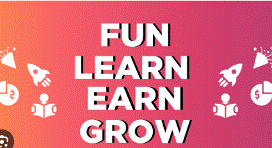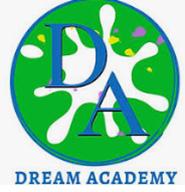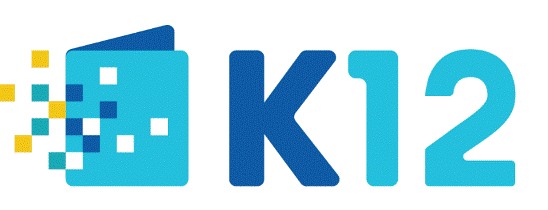





|
|
|
|
|
COMPUTER-K12-CLASS-12 |
|
UNIT 1 : OBJECT ORIENTED PROGRAMMING IN C++
REVIEW :C++ covered in Class - XI,
Object Oriented Programming: Concept of Object Oriented Programming- Data hiding, Data encapsulation, Class and Object, Abstract class and Concrete class, Polymorphism
(Implementation of polymorphism using Function overloading as an example in C++); Inheritance,
Advantages of Object Oriented Programming over earlier programming methodologies.
Implementation of Object Oriented Programming concepts in C++: Definition of a class, Member of a class - Data Members and Member Functions (methods), Using Private and Public visibility modes, default visibility mode (private); Member function definition: inside class definition and outside class definition using scope resolution operator (::); Declaration of objects as instances of a class;
accessing members from object(s), Objects as function arguments - pass by value and pass by reference;
Constructor and Destructor: Constructor: special characteristics, declaration and definition of a constructor, default constructor, overloaded constructors, copy constructor, constructor with default arguments.
Destructor: Special Characteristics, declaration and definition of destructor; Inheritance (Extending Classes): Concept of Inheritances, Base Class, Derived classes, Defining derived classes, protected visibility mode; Single level inheritance, Multilevel inheritance and Multiple inheritance, Privately derived, publicly derived and Protectedly derived class, accessibility of members from objects and within derived class (es);
Data File Handling: Need for a data file, Types of data files - Text file and Binary file;
Text File: Basic file operations on text file: Creating/Writing text into file, Reading and Manipulation of text from an already existing text file (accessing sequentially);
Binary File: Creation of file, Writing data into file, Searching for required data from file, Appending data to a file, Insertion of data in sorted file, Deletion of data from file, Modification of data in a file; Implementation of above mentioned data file handling in C++; Components of C++ to be used with file handling;Header file: fstream.h, ifstream, ofstream, fstream classes; Opening a text file in, out, and APP modes :Using cascading operators (>><<) for writing text to the file and reading text from the file; open(), get(), read(), put( ), write(), getline( ) and close( ) functions. Detecting end-of-file (with or without using eof() function); tellg(), tellp(), seekg(), seekp().
Pointers : Introduction to Pointer, Declaration and Initialization of Pointer; Dynamic memory allocation/de-allocation operators: new, delete; Pointers and Arrays: Array of Pointers, Pointer to an array (1 dimensional array), Function returning a pointer, Reference variables and use of alias; Function call by reference. Pointer to structure: De-reference/Deference operator: *,->; self referential structure;
UNIT 2 : DATA STRUCTURE Introduction to data structure - Array, Stack, Queues. Primitive and non-primitive data structure, linear and non-linear structure, static and dynamic data structure. Arrays: One and two Dimensional arrays: Sequential allocation and address calculation; One dimensional array: Traversal, Searching (Linear, Binary Search), Insertion of an element in an array, deletion of an element from an array, Sorting (Insertion, Selection, bubble) Two-dimensional arrays: Traversal, Finding sum/difference of two N x M arrays containing numeric values, Interchanging Row and Column elements in a two dimensional array; Stack (Array and Linked implementation of Stack): Introduction to stack (LIFO- Last in First Out Operation) Operations on Stack (PUSH and POP) and its Implementation in C++, Converting expressions from INFIX to POSTFIX notation and evaluation of Postfix expression; Queue: (Array and Linked Implementation): Introduction to Queue (FIFO-First in First Out Operation) Operations on Queue (Insert and Delete and its Implementation in C++. (circular queue using array)
UNIT 3 : DATABASES MANAGEMENT SYSTEM AND SQL Database Concepts :Introduction to data base concepts and its need. Relational data model: concept of domain, tuple, relation, key primary key, alternate key, candidate key; Relational algebra: Selection, Projection, Union and Cartesian product; Structured Query Language: General Concepts: Advantages of using SQL., Data Definition Language and Data Manipulation language; Data types: NUMBER/DECIMAL, CHARACTER/VARCHAR/VARCHAR2, DATE; SqlCommands :Create table, drop table, alter table, update... Set..., insert, delete; select, distinct, from, where, in, between, group by, having, order by, Sql functions: sum, avg, count, max and min; Obtaining results (SELECT query) from 2 tables using equi-join, Cartesian Product and Union Note: Implement of the above mentioned commands could be done on any SQL supported software on one or two tables.
UNIT 4 : BOOLEAN ALGEBRA Role of Logical Operations in Computing Binary-valued Quantities, Boolean Variable, Boolean Constant and Boolean Operators: AND, OR, NOT; Truth Table; Closure Property, Communicative Law, Associative Law, Identity law, Inverse law, Principle of Duality, Idempotent Law, Distributive Law, Absorption Law, Involution law, DeMorgan's Law and their applications; Obtaining sum of Product (SOP) and Product of Sum (POS) form the Truth Table, Reducing Boolean Expression (SOP and POS) to its minimal form, Use of Karnaugh Map for minimization of Boolean expressions (up to 4 variables);
Application of Boolean Logic :Digital Electronic Circuit design using basic Logic Gates (NOT, AND, OR, NAND, NOR), Use of Boolean operators (NOT, AND, OR) in SQL SELECT statements, Use of Boolean operators (AND, OR) in search engine queries.
UNIT 5 : NETWORKING AND OPEN SOURCE SOFTWARE Communication Technologies : Evolution of Networking: ARPANET, Internet, Interspace Different ways of sending data across the network with reference to switching techniques (Circuit and Packet switching)
Data Communication terminologies: Concept of Channel, bandwidth (HZ, KHZ, MHZ) and Data transfer rate (bps, kbps, Mbps, Gbps, Tbps)
Transmission media: Twisted pair cable, coaxial cable, optical fiber, infrared, radio link, microwave link and satellite link
Network Devices: Modem RJ45 connectors, Ethernet Card, Router, Switch, Gateway, WiFi card Network Topologies and types: Bus, Star, Tree; PAN, LAN, WAN, MAN Network Protocol: TCP/IP, File Transfer Protocol (FTP), PPP, SMTP, POP3, Remote Login (Telnet), InternetWireless/Mobile Communication protocol such a GSM, CDMA, GPRS, WLL, Mobile Telecommunication Technologies : 1G, 2G, 3G and 4G, Mobile processor. Electronic mail protocols such as SMTP, POP3 Protocols for Chat and Video Confencing VOIP Wireless technologies such as Wi-Fi and WiMax Network Security Concepts :Threats and prevention from Viruses, Worms, Trojan horse, Spams Use of Cookies, Protection using Firewall, https
Introduction To Web Services : W WW, Hyper Text Markup Language (HTML), extensible Markup Language (XML); Hyper Text Transfer Protocol (HTTP); domain Names; URL; Website, Web browser, Web Servers; Web Hosting, Web Scripting - Client side (VB Script, Java Script, PHP) and Server side (ASP, JSP, PHP), Web 2.0 (for social networking).
E-commerce payment transaction using online banking, mobile banking and payment apps and services.
------------------ PRACTICAL PT-2
Duration : 3 hours Total Marks : 30
1. Programming in C++ 10 marks One programming problem in C++ to be developed and tested in Computer during the examination. Marks are allotted on the basis of following:
Logic : 5 Marks
Documentation/Indentation : 2 Marks Output presentation : 3 Marks
SCIENCE - CLASS XII SYLLABUS 2019-20 D.A.V. PUBLIC SCHOOL CHANDRASEKHARPUR, BBSR
SQL command 05 marks
Five Query questions based on a particular Table / Relation to be tested practically on Computer during the examination. The command along with the result must be written in the answer sheet.
Project Work 05 marks Practical Record 06 marks
Practical Record should contain following programs
1. Class program - 3 programs. 2. Constructor Destructor - 2 programs. 3. Array - 5 programs. 4. SQL 5. Viva Voce 04 Marks
PRACTICAL (ANNUAL) Duration : 3 hours Total Marks : 30
1. Programming in C + + [10] One programming problem in C++ to be developed and tested in Computer during the examination. Marks are allotted on the basis of following: Logic : 6 Marks Documentation/Indentation : 2 Marks Output presentation : 2 Marks Notes: The types of problem to be given will be of application type from the following topics Arrays (One dimensional and two dimensional) Class(es) and objects Stack using arrays and or linked implementation Queue using arrays (Circular) and or linked implementation Binary File operations (Creation, displaying, Searching and modification) Text File operations (Creation, Displaying and modification)
2. SQL Commands [5] Five Query questions based on a particular Table / Relation to be tested practically on Computer during the examination. The command along with the result must be written in the answer sheet.
3. Project Work [5] The project has to be developed in C++ language with Object Oriented Technology and also should have use of Data files. (The project is required to be developed in a group of 2-4 students)
Presentation on the computer Project report (Listing, Sample, Outputs, Documentations) Viva 1 mark is for innovation while writing the program. SCIENCE - CLASS XII SYLLABUS 2019-20 D.A.V. PUBLIC SCHOOL CHANDRASEKHARPUR, BBSR PAGE NO. # 23
4. Practical File [6] Must have minimum 20 programs from the following topics Arrays (One dimensional and two dimensional, sorting, searching, merging, deletion and insertion of elements) Class(es) and objects Stacks using arrays and linked implementation . Queues using arrays and linked implementation(circular also) File (Binary and Text) operations (Creation, Updation, Query) Any computational Based problems
15 SQL commands along with the output based on any table/ relation: 5. Viva Voce [4] Viva will be asked from syllabus covered in class XII and the project developed by student.
GUIDELINES FOR PROJECTS
Preamble
The academic course in Computer Science includes on Project in each year. The Purpose behind this is to consolidate the concepts and practices imparted during the course and to serve as a record of competence.
A group of 2-3 students as team may be allowed to work on one project.
2. Project content
Project for class XI can be selected from the topics mentioned in the syllabus or domains on the similar lines
Project for class XII should ensure the coverage of following areas of curriculum: a. Flow of control b. Data Structure c. Object Oriented Programming C++ d. Data File Handling
Theme of the project can be Any subsystem of a System Software or Tool Any Scientific or a fairly complex algorithmic situation School Management, Banking, Library information system, Hotel or Hospital management system, Transport query system
Quizzes / Games;
Tutor, Computer Aided Learning Systems
It is suggested to prepare a bilingual (English and other Indian language) user manual part of project file
The aim of the project is to highlight the abilities of algorithmic formulation, modular programming, optimized code preparation, systematic documentation and other associated aspects of Software Development.
|
